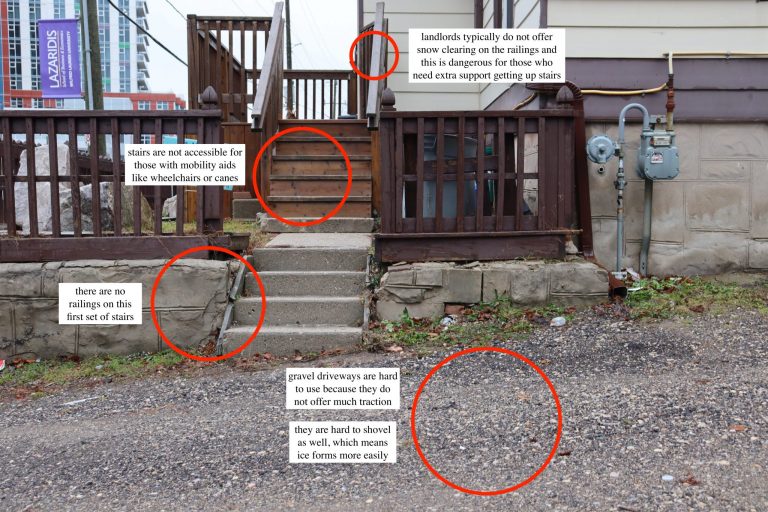Although the effects of the housing crisis are being felt throughout the region, people with disabilities face additional difficulties when looking for affordable housing.
In Canada, people with disabilities are far more likely to live in poverty than those without disabilities: 23 per cent of adults with disabilities are considered low-income compared to nine per cent of the rest of the population.
As of 2011, only about half of adult Canadians with disabilities were employed, compared to about 80 per cent of Canadians without disabilities.
On top of issues with employment and income, people with disabilities are more likely to live in poverty due to the extra costs that come with being disabled. For example, wheelchairs, medication, accessible renovations and other care needs all eat into a person’s budget.
“When someone experiences double marginalization [as in] they are of a lower socioeconomic status and then they also have disability on top of that those compound and [those forms of] discrimination add up and multiply,” Chantal Huinink, regional councilor for Waterloo, said.
“The experience is always worse for someone dealing with double or triple marginalization compared to a person who is only dealing with one,” she said.
With a higher likelihood of living in poverty coupled with extra costs, people with disabilities are more likely to fall into the group of those looking for affordable housing.
However, their options for affordable housing may be further limited because many people with disabilities need accessible homes.
An accessible home might include ramps, elevators, grab bars and many other features that accommodate a variety of disabilities.
If the supply for affordable housing in the region is already low, the supply of affordable housing that is accessible for people with disabilities is even lower.
Amy Ross, accessibility advocate for the City of Waterloo’s Indigenous Initiatives, Anti-Racism, Accessibility and Equity team said disabilities exasperate the effects of housing insecurity. There is a lack of accessible housing within the lack of affordable housing.
“If you think about the neighborhood that you live in, how many buildings have stairs or elevators?…Not every building has features that [create accessibility for] every person with a disability,” she said.
Waterloo’s affordable housing strategy aims to address the issues of affordable housing through several approaches, including increasing the diversity of the housing supply through investing in accessible units, as well as other types of units.
Citizens looking to improve housing in the region for people with disabilities can provide feedback to the region and municipalities through the Engage platform or by contacting their councilor.
“I think if there are people experiencing [issues with affordable housing due to disability] who are willing to share their stories with their city councilors and their regional councilors, that can be valuable in terms of making sure that future initiatives are tailored as best they can towards the needs of the population including but not exclusive to people with various abilities and disabilities,” Huinink said.
Ross is a part of the Grand River Accessibility Advisory Committee (GRAAC), whose members share their lived experiences of disability to advise municipalities and create barrier-free services. Ross also suggested residents engage with decision-makers and vote thoughtfully.
“People need to think very carefully about who they’re voting for especially at the provincial level, even the federal level as well, not just local because those folks are your voice at the table for what policies come into play and what things are [considered] important,” Ross said.
Huinink said that attention to accessibility must be a part of every decision, rather than isolated projects.
“There haven’t been any initiatives [from regional council] that I’ve seen specifically or exclusively addressing the housing needs of people with disabilities,” Huinink said.
“Quite honestly I think that’s a good thing. I would rather see the concerns of people with disabilities factor into everything we do, not just exclusive projects,” she said.

